The editor gets first go of the production Priest, courtesy of City Air Weapons
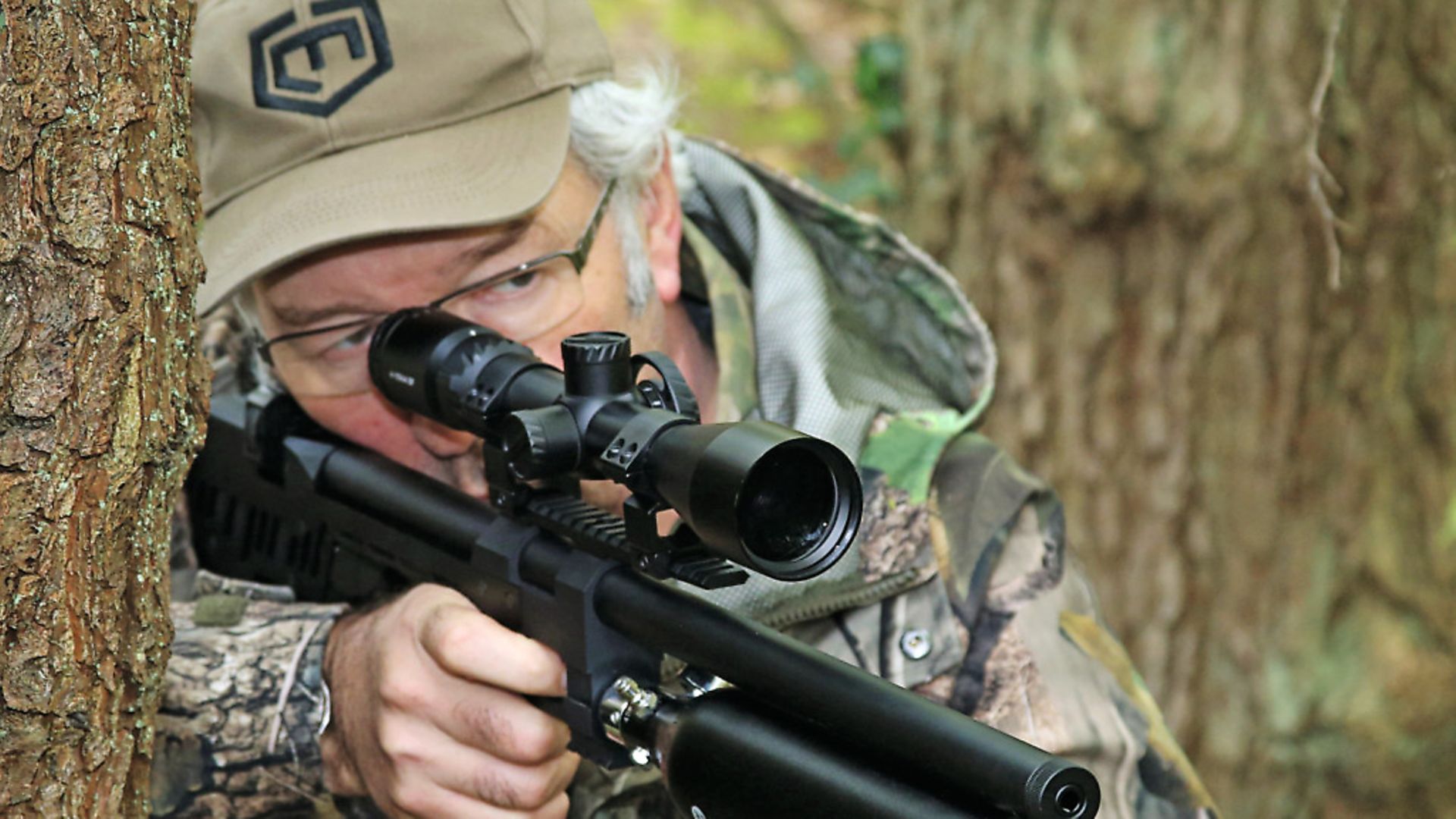 credit: Archant
credit: Archant
Stand by for a review of a new rifle that has so much going on, I daren’t waste a word on my usual waffle. Eyes down, look in – and let’s have an audience with the Priest.
What I have, here, is the first, and completely fettled, production example of a pre-charged pneumatic, fully regulated, multi-shot bullpup, which is made by RTI Arms in Slovenia, and includes a fully-sleeved CZ-produced barrel, a drop-down pistol grip, Picatinny scope rail and a two-stage, adjustable trigger. The Priest comes in a tasteful matte black, and it’s distributed exclusively by City Air Weapons of Birmingham.
This rifle arrives at City Air Weapons in its high-power, 40-plus ft.lbs. format, after which the City airgunsmiths set to and do the fettling I mentioned earlier. The ‘robust’ hammer spring makes way for a less urgent replacement, and this immediately reduces the rifle’s cocking effort to a smooth, finger-friendly, rearward ‘snick’, rather than the full-on tug required by the FAC version. There are other refinements carried out by the City Air Weapons backroom boys, but these are to remain under cover, a bit like the precise function of the Priest’s regulator, which as you’ll see, is an impressive feature.
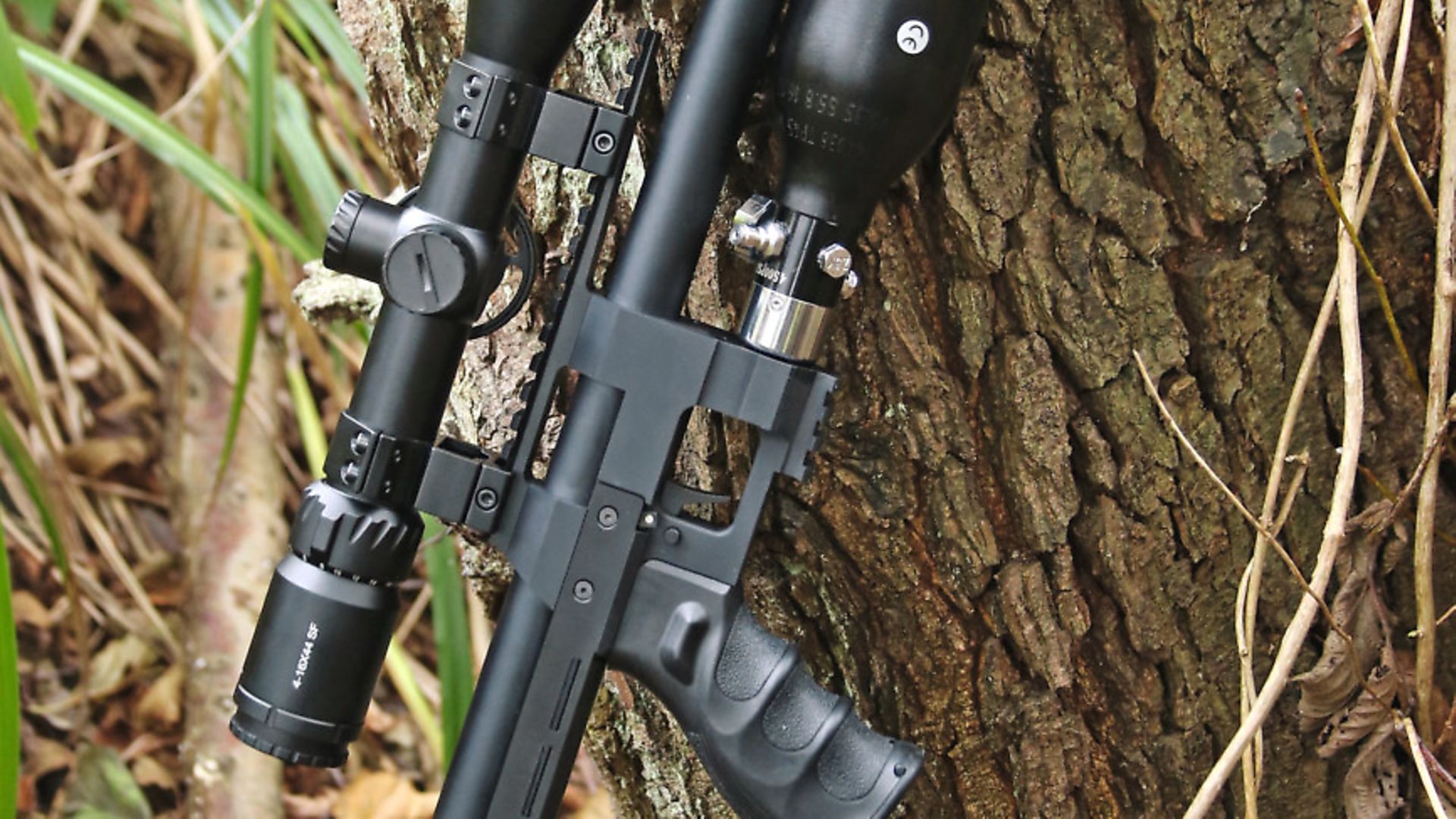 credit: Archant
credit: Archant
Many extras
The Priest is supplied in your choice of calibre and comes with a single, removable, rotary magazine, which can be inserted from the left or right, depending on the shooter’s orientation. So far, the Priest’s calibre choices include the usual Holy Trinity of .177, .22 and .25, although a .30 is on the way, presumably for FAC holders. Spare magazines will cost you £49.99 each, and these are just one of many optional extras available for this remarkable bullpup.
You can also change the look of the Priest by fitting tinted sideplates, which come in silver or green and attach in a minute or two, provided you don’t drop the little hex-head fixing screws and spend 10 minutes crawling on the ground looking for them. Each sideplate option costs £23.99 a pair, and for what it’s worth, I’m a fan of the green version.
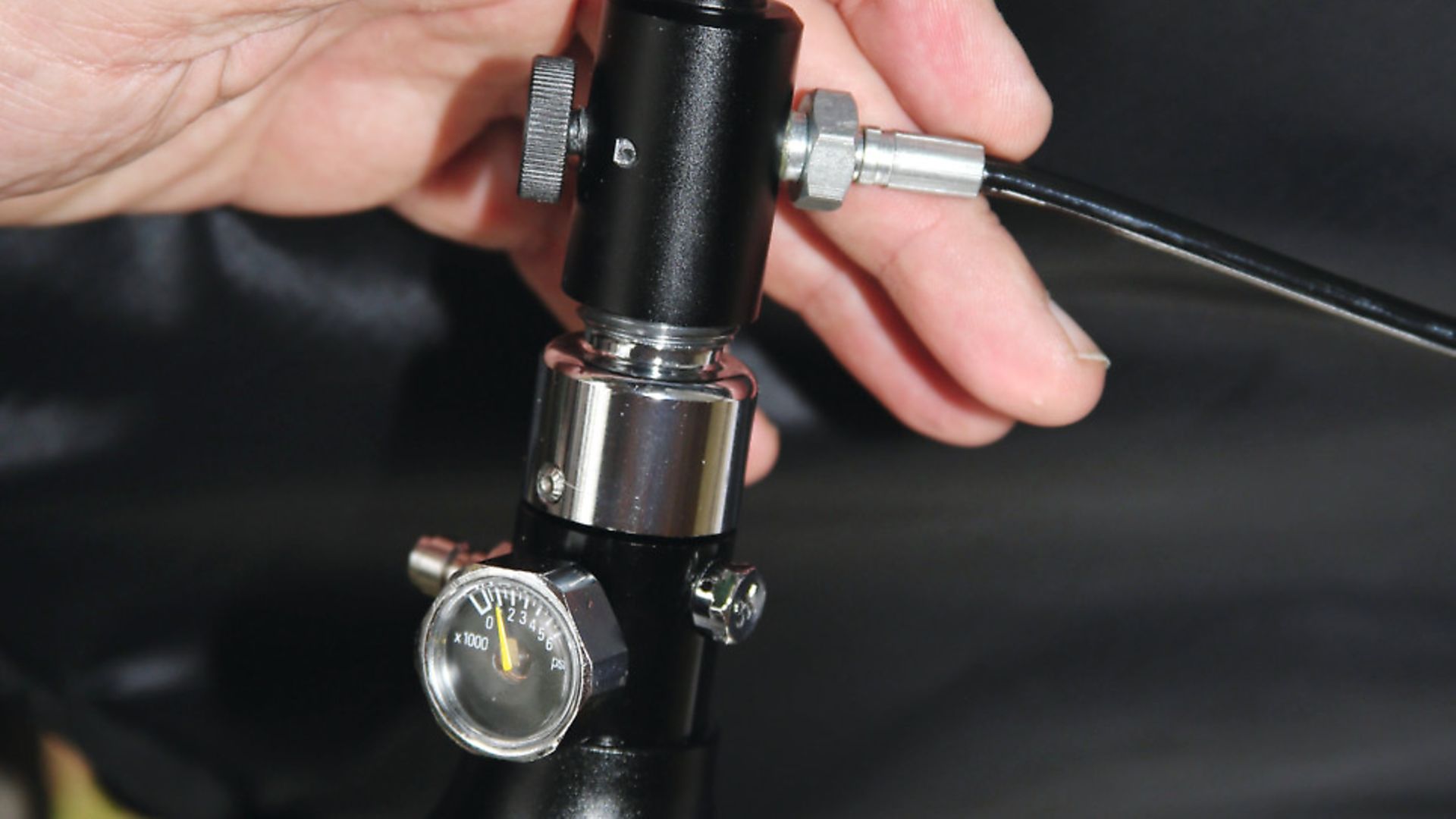 credit: Archant
credit: Archant
Swap those barrels
Should you fancy it, you can change the calibre of the rifle in around five minutes, courtesy of a £320 barrel-swap option, which includes the barrel itself, the tool required to remove and replace barrels, plus a replacement pellet probe and a magazine. I’ve carried out a couple of replacements, and thanks to the instructions provided, plus a couple of hex wrenches, I’m here to tell you it’s easy. I’ll go through the whole step-by-step, barrel-swap deal in next month’s follow-up test, but take it from one who is irretrievably inept when it comes to such matters, anyone can swap the Priest’s barrels over.
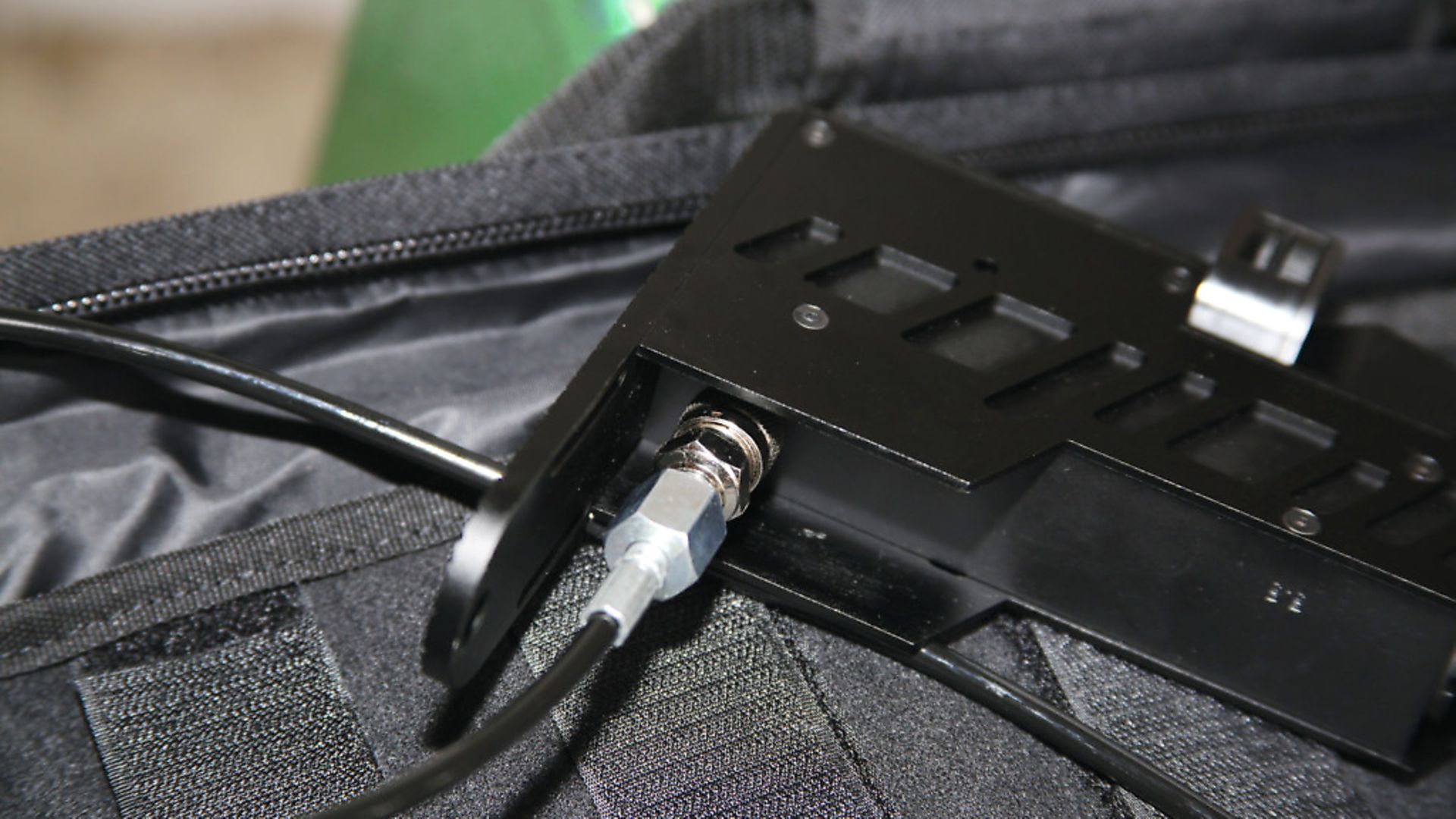 credit: Archant
credit: Archant
Bottle on – bottle off
Before I leave the optional extras list, you’ll notice from the photos that this rifle has a detachable air-supply option, and I think it could appeal to a significant number of potential Priest owners. If the front-mounted air bottle is unscrewed – best done when the air supply has dropped below the Priest’s 125 bar reg’ pressure and therefore needs recharging – it can then be connected to an umbilical hose, via a threaded adaptor at the bottle end and a standard Foster coupling inside the rifle’s butt section. The bottle can now be slipped into a handy pocket, thus reducing the weight of the Priest from a fraction over 3 kilos (6.6 lbs), to around 2 kilos (4.4 lbs). The umbilical is a £40 option, and I bet plenty of new members of the City Air Weapons clergy will go for it.
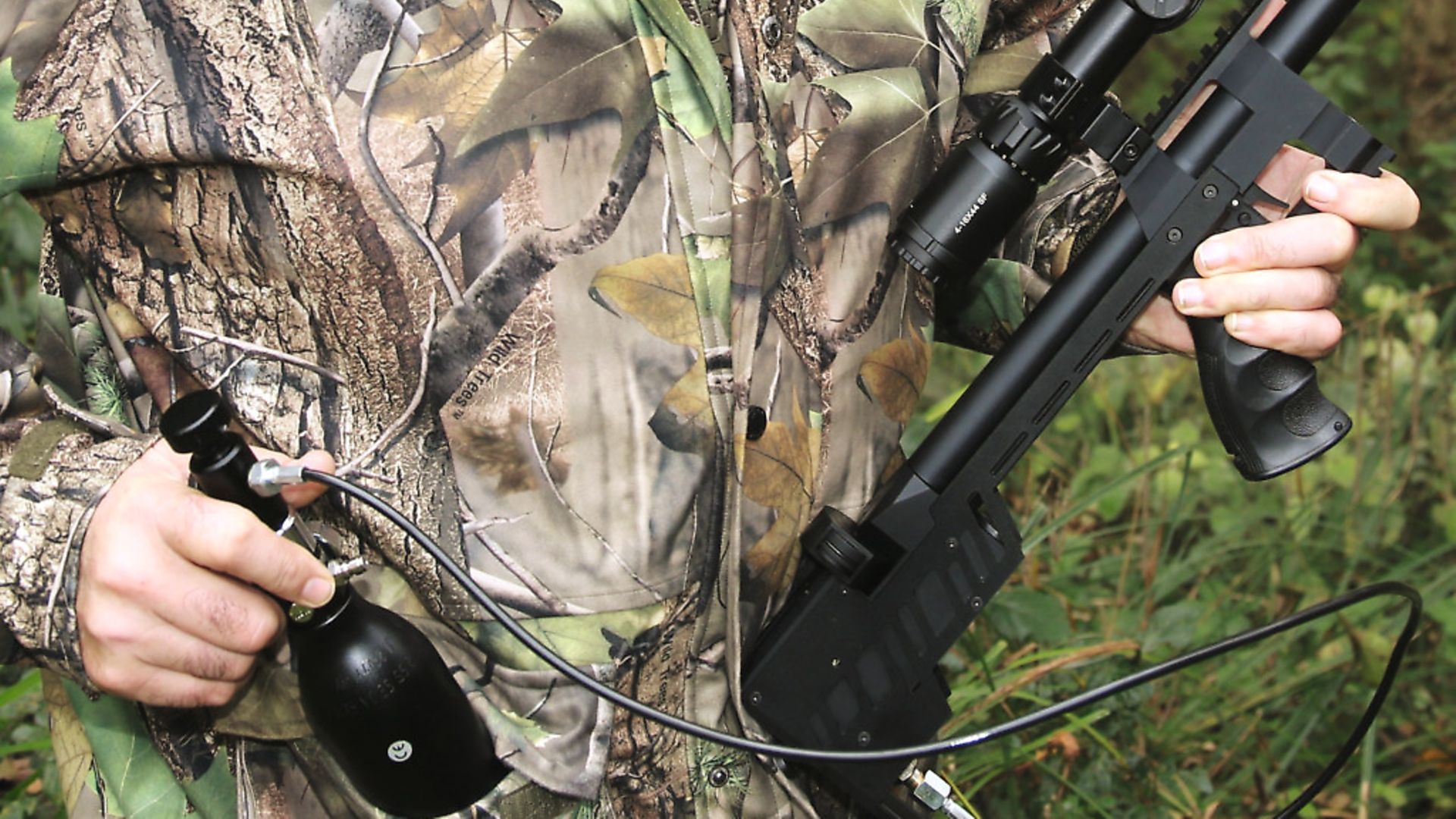 credit: Archant
credit: Archant
A case in point
The final option delivered with the test rifle is a fully padded, tactical – compulsory word alert – case, with multiple compartments and enough weapons grade Velcro to restrain a particularly angry badger. This case is yours for £100 and like everything other member of the Priest’s flock, it’s a high-quality option, made up to a standard, not down to a cost. The more I use this fascinating rifle, the more it becomes obvious that some sort of dedicated gun bag is needed to keep it safely contained. If you decide to decline the City Air Weapons option, then sort out something similar. You don’t really want this compact rifle sliding around inside a standard rifle case.
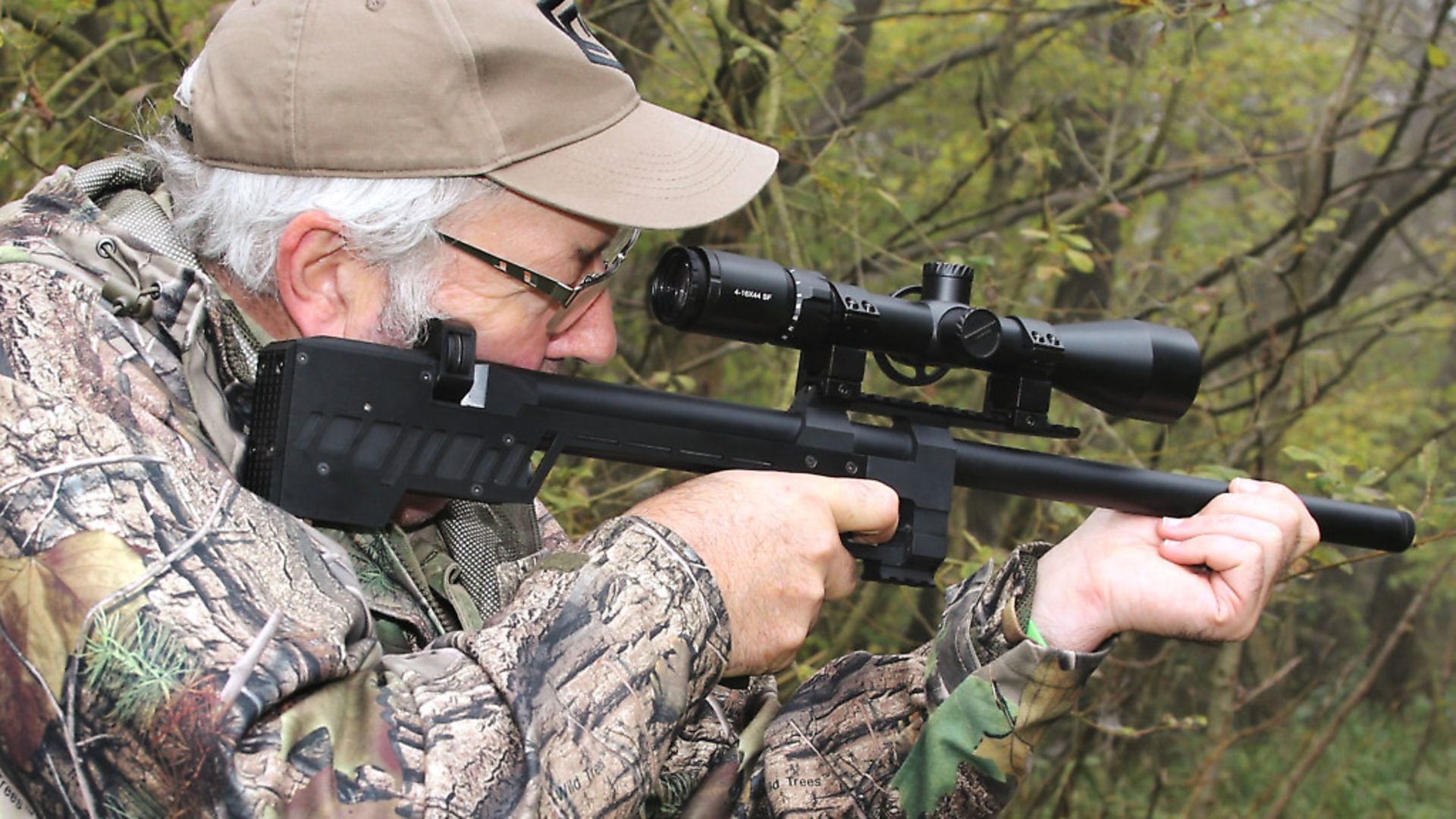 credit: Archant
credit: Archant
Charging and shot count
The Priest can be charged to 300 bar, which is 4,350 psi, or very near offer. Unfortunately, the Priest’s on-board pressure gauge is marked only in psi, so my recommendation is either to charge to the ‘4’ mark on the Priest’s gauge, or better still, use the gauge on your air tank as your guide, instead. I’m assured that RTI Arms test their air bottles to 700 bar, so a few psi either way isn’t going to compromise anything, but it’s always best to get everything just right when it comes to high-pressure air.
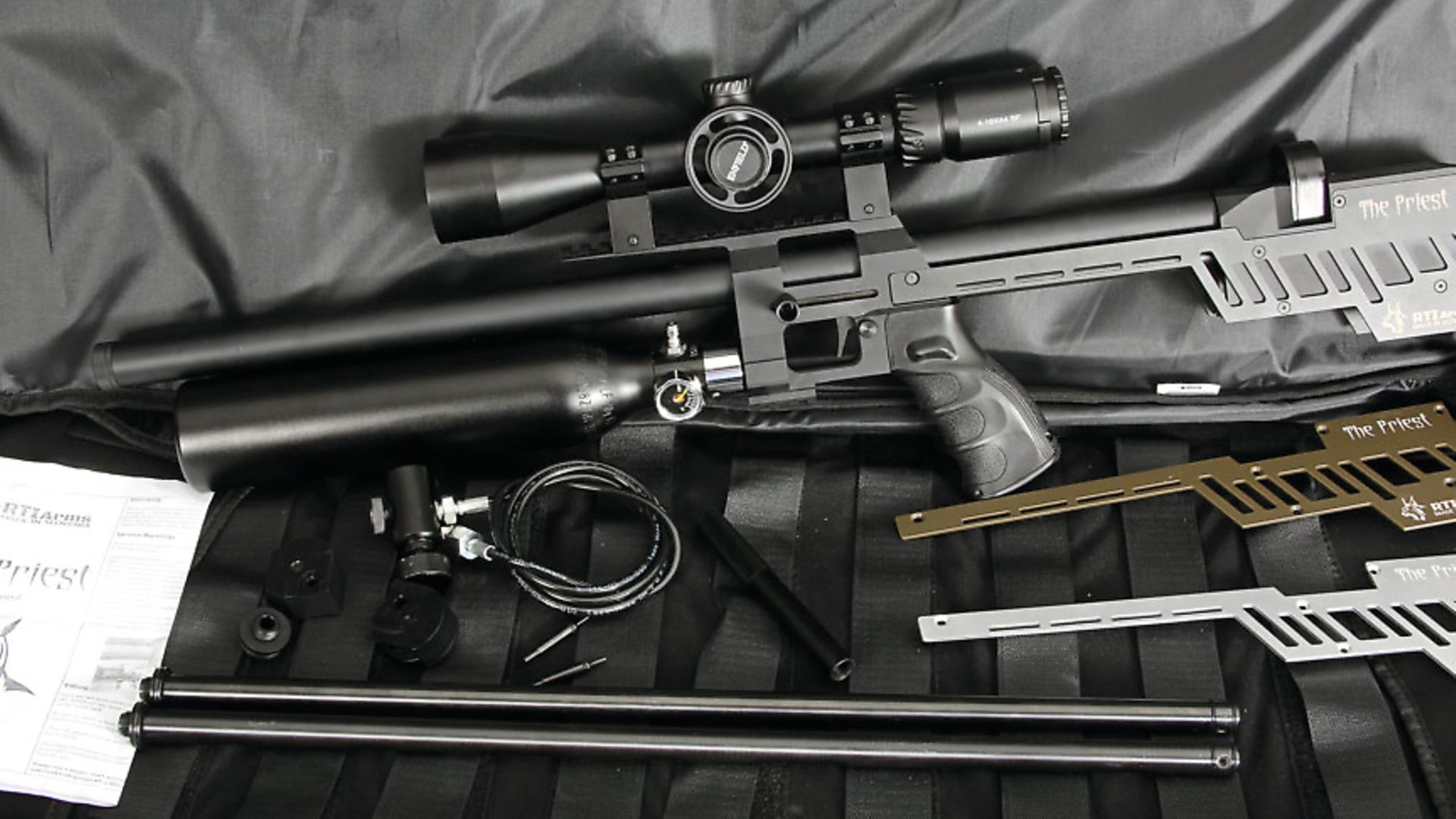 credit: Archant
credit: Archant
Each full charge of the Priest’s 320cc buddy bottle will yield an impressive amount of shots, specifically around 350 in .177, 450-plus in .22, and a claimed 110 in its .25, high-power, FAC setup. It goes without saying that I haven’t put anything like 350 continuous shots over a chronograph, yet, but what I have done, is to give the Priest’s regulator the chance to show me what it’s made of, with some consistency data.
Consistency and accuracy
Using my precious supply of ‘old’ JSB pellets in .177, the test rifle clocked an impressive average of just 11 fps variation over the first 50 shots, so whatever design that reg’ is, it’s putting in a fine shift on board the Priest. My next job was to see how that commendable consistency translated into downrange accuracy, so I taped up a paper target at 40 yards, settled on my familiar beanbag, and gave it my best shots.
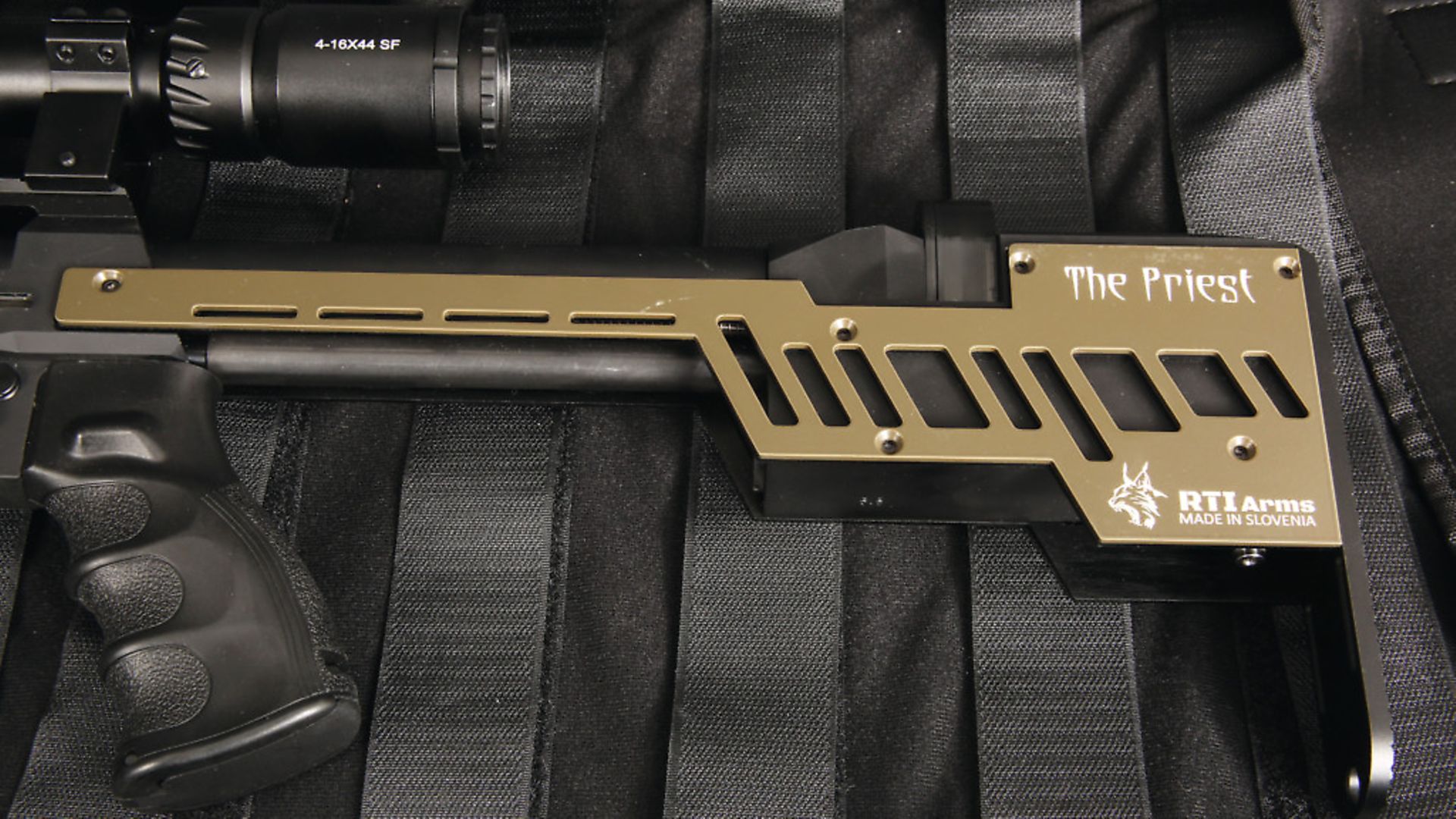 credit: Archant
credit: Archant
I’ve reproduced my best effort on these pages, although the target became rain-sodden before I had a chance to gather it – truth to tell I wimped out of getting a soaking and cowered under the club’s covered range until the downpour stopped. That’s why the target dried out a bit oddly, but the accuracy return is there for all to see and that’s what matters. Just to confirm; at 40 yards, using selected pellets, the Priest can bless your shooting with sub-20mm diameter groups … provided you’ve done your pellet-testing homework.
Choose those pellets wisely
I always chunter on about the need to go through a proper pellet selection process before deciding on a brand, or even a batch, to use in any new rifle. This is one of the foundations of optimim performance and it always will be, although it applies more to some rifles than others. I can now confirm that this most golden of rules applies big-time to the Priest.
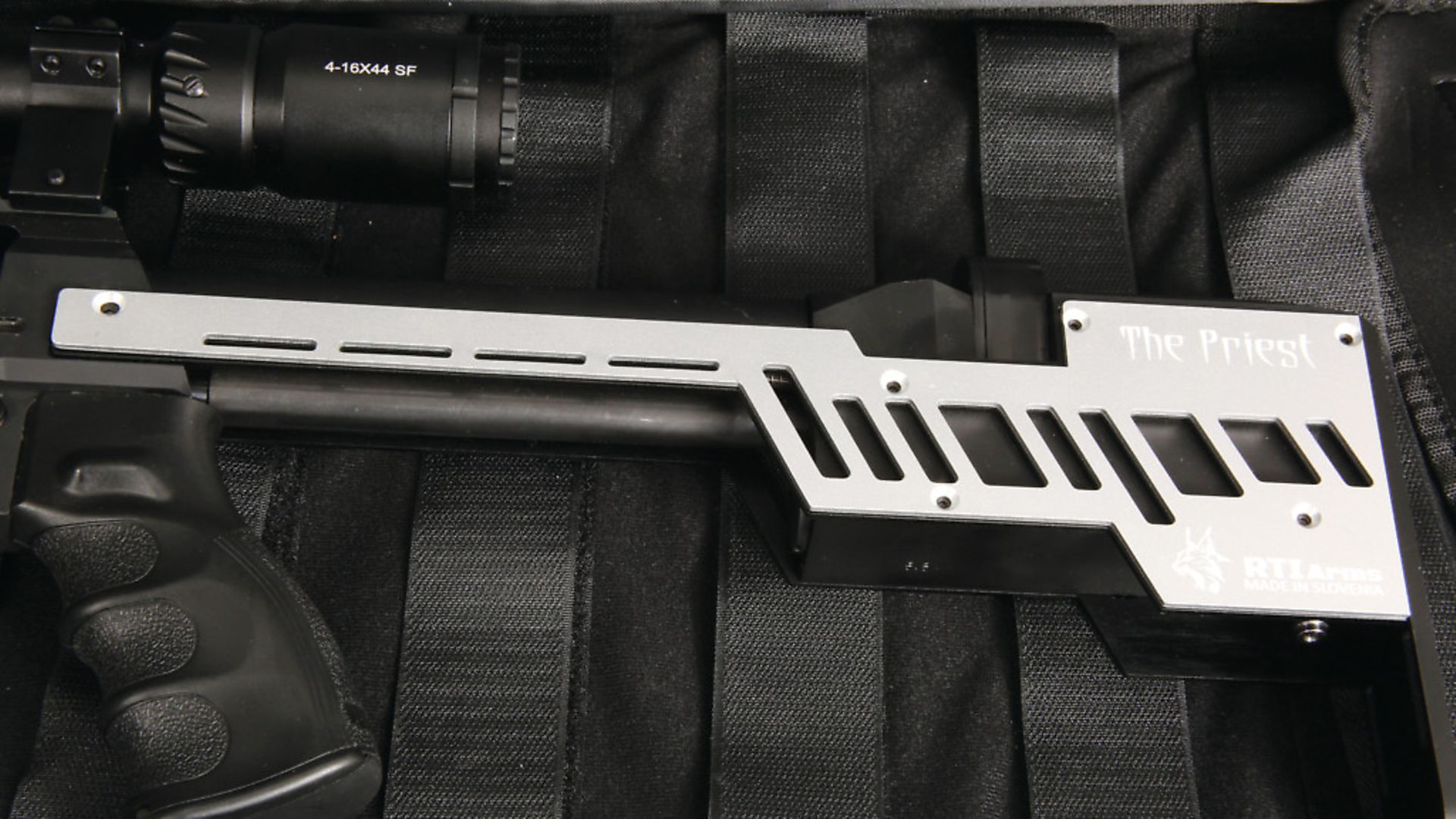 credit: Archant
credit: Archant
This rifle isn’t necessarily pellet-fussy, it just hates one or two brands, including one of my absolute go-to pellets, the Air Arms Diabolo Field. I have never tested a rifle that didn’t shoot Fields to a high standard, until the Priest rocked up and started spitting them all over the place. By ‘all over the place’, I mean printing groups of 40mm diameter, instead of half that size, but it still shocked my sad old world. I say again, test, test and re-test your pellets, until you find the ultimate ammo. I ‘found’ some vintage JSBs and a tin of H & N FT Trophy topped my test list, at least in .177, and it will be interesting to see what happens when I swap those barrels around.
The magazine
The Priest runs a removable, rotating, multi-shot magazine that holds 16, .177 pellets, 12 in .22 and 10 in .25. The magazine is built from a self-lubricating, high-performance, synthetic compound, with a locating cutout on both faces to allow insertion from both sides. Basically, if you’re right-handed, you’ll want the mag’ protruding from the right-hand side of the action so it doesn’t poke into your face … and vice-versa, of course.
When the magazine is located in the breech slot, there’s an intended degree of ‘float’ to encourage the loading probe to seat the pellets without damaging them, so don’t worry if everything isn’t clamped tight. This magazine system works well, and you simply drop in the pellets and rotate the pellet-carrying inner wheel manually until the magazine is fully loaded. My one niggle is that the magazines should be marked according to their calibre, especially if you take up the barrel-swap option.
Handling report
First, it’s a bullpup, so if you’re new to this most fashionable of rifle types, don’t expect classic sporter handling. The Priest isn’t heavy, but it’s inherently stable, due to its low profile and a matching centre of gravity. I found I needed fairly high mounts, which put the scope’s centre line just under 2.75 inches off the bore centre, and for peace of mind and the further reassurance of precision performance, I’d fit a spirit level to this rifle. These can actually become training aids and encourage smooth, correct, vertical mounting of the rifle, and I have levels on most of my guns.
Cold metal will never make the most comfortable place to rest a glowing cheek, but at least the momentary chill provides an instant reference, which can be repeated for maximum consistency of hold. At least some of you think that last bit is cobblers, don’t you? It really isn’t. If you repeat the ‘feel’ of the Priest’s cheekpiece against your face, the rest of the hold is likely to be repeated along with it. Yes, really.
Shoulder contact
I’m not a massive fan of straight, flat, butt plates, and that’s exactly what you get on the Priest. Personally, I’d be looking at curved, custom options, but my rantings about gunfit are even boring me now, so I’ll spare you the tedium. It’s early days with the Priest, but its high accuracy potential deserves to be exploited to the full, and a sliding, more human-hugging butt plate would go some way to assisting.
Trigger testing
I was, frankly, surprised at the sensitivity of the Priest’s two-stage trigger, mainly because it arrived set to release the shot at just over 1.5lbs, according to my pull gauge. The trigger unit has a reported low release weight of just half a pound, but I won’t be going there on a sporter, thanks. A safe, predictable, creep-free setting of around 2lbs is my kind of comfort zone, so the Priest offers everything I need, and apparently more.
Observations and recommendations
Straight away, and before I’d take this rifle into the hunting field, I’d get both Foster coupling points protected with covers. I know City Air Weapons is working on this and those covers may be sorted by the time this article hits the news stands, but if your Priest arrives unfrocked, get those couplings covered. Dirt, grit, or any sort of contamination in those inlets potentially means a dead rifle.
Next, I’d seriously consider a compact silencer to spin down on the provided adaptor. Yes, to add further noise-suppression to an already quiet rifle, but also to make sure that my overly-long arms didn’t allow my fingers to stray in front of the muzzle. I’m thinking Huggett Belita, and I’ll ask the man himself to send me one in time for next month’s follow-up test.
Final thoughts
I still have a ton of stuff to investigate about the Priest. There are two more calibres to evaluate, for a start, plus the silencer option, and I’ll be swapping those sideplates around to vary the look, hopefully without dumping the fixing screws this time. So far, the test rifle has established itself as an impressively accurate, commendably consistent and well made bullpup, and the future’s looking positive. Meet me in the Airgun World parish next month – and I promise I’ll confess all.
Specification:
Model: The Priest
Manufacturer: RTI Arms
Country of origin: Slovakia
Type: Pre-charged, multi-shot, bullpop sporter
Calibre: .22, .177, .25, with .30 on approach
Cocking: Bolt-action
Loading: Via removable, rotary multi-shot magazine
Trigger: 2-stage, adjustable
Stock type: Skeletonised, ambidextrous
Weight: 3kg (6.6lbs) Unscoped
Length: 510mm (28ins)
Barrel: 430mm (20ins) CZ made
Fill pressure: Max 300 bar
Shots per charge: 450-plus in .22, 350 in .177, 110 at FAC
Variation over 50 shots: 11fps for .177 on test
Average energy: 11.6 ft.lbs.
Contact: 0121 742 1329
Website: www.cityairweapons.com
RRP: £899